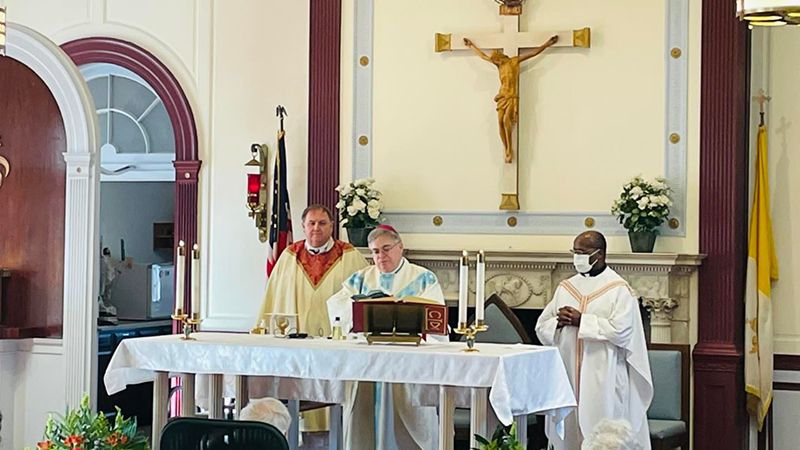
The Diocese of Allentown has recently observed the Feast of St. Peter's Chair, which commemorates Saint Peter as the foundation of the Catholic Church. | Diocese of Allentown/Facebook
The Diocese of Allentown has recently observed the Feast of the Chair of St. Peter, which commemorates Saint Peter as the foundation of the Catholic Church.
The feast of the Chair of Saint Peter is celebrated every year on Feb. 22, providing an opportunity to recognize Saint Peter as well as the role of the Pope, a position that has presided over the Catholic Church for nearly 2,000 years, according to Franciscan Media.
"Today celebrates the office, mission and promise of Christ that the chair represents, and we join together in prayers for our Bishop, Pope Francis, and the unity of our Church," the Diocese of Allentown announced on Facebook.
Saint Peter, a close companion of Jesus and one of his 12 disciples, is regarded as the Church's first Pope, according to a St. Peters Basilica tickets.
Following Jesus' death and resurrection, Jesus appointed Peter as the head of the apostles and as the head of his church, according to Simply Catholic.
Additionally, since Jesus did not intend for the Church to end with Peter, a succession system for the church's leadership was developed; each Pope is recognized as the successor of Saint Peter.
"In Rome’s St. Peter’s Basilica, there is a chair, enshrined in the sumptuous Altar of the Chair of St. Peter by the great architect Bernini, but it is a symbol representing the 2,000-year-old papacy and unity the Pope continues to bring to Catholics around the world," Simply Catholic states. "Without such unity, the Church would splinter into numerous sects and divisions."
Following his appointment to this position, Peter went to preach and spread Jesus' teachings, eventually establishing a seat of government in Antioch around the year 34 A.D.
The Church recognized his efforts in Antioch by creating the feast of St. Peter's Chair.
Peter would eventually make his way to Rome, where his work would establish him as the first Bishop of Rome.
Peter was ultimately crucified during Emperor Nero's reign after the emperor accused Christians of being responsible for a large fire that broke out in Rome.
His crucifixion occurred at what was known as Nero's Circus, where he requested to be crucified upside down since he did not feel he deserved to die in the same manner as Jesus.





 Alerts Sign-up
Alerts Sign-up